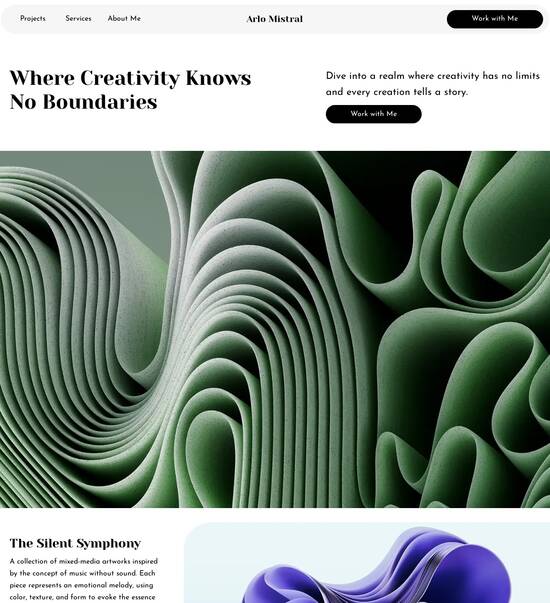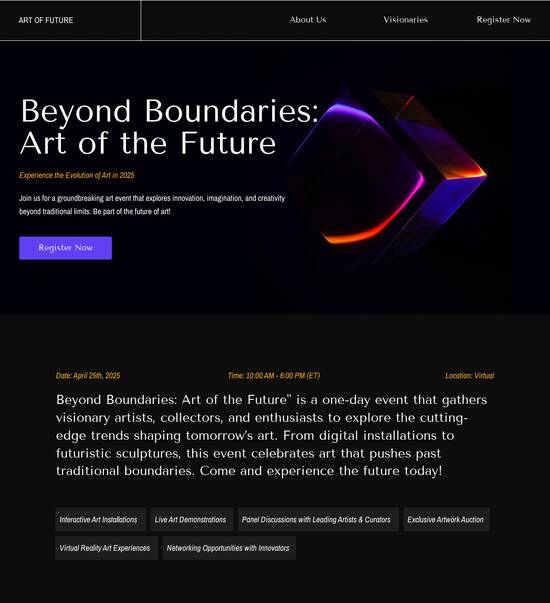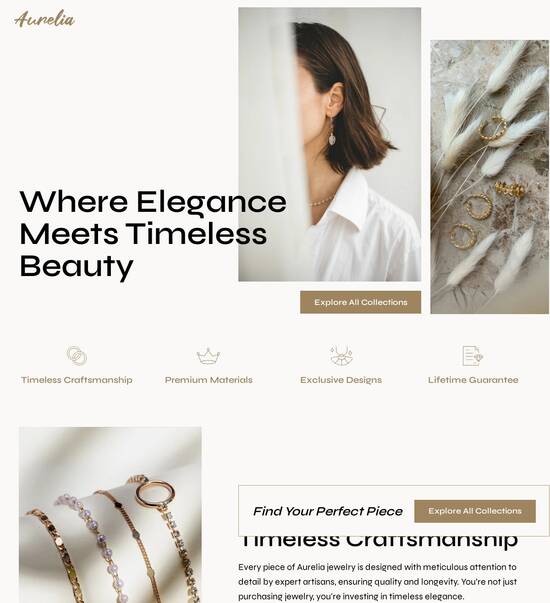
HTML page template for Legal mediators
Use TemplateAbout template
Attract clients and showcase your skills with style using our landing page templates for Legal mediators. Let's convert those visitors into clients!
Recommended templates

Easy to build without coding
With the intuitive drag-and-drop builder, anyone on your team can create high-converting pages without any knowledge of code or design. Make enhancements to your landing page with custom widgets using Javascript, HTML/CSS, or third-party scripts.

Multiple layouts for any industry and goal
Select from 500+ landing page layouts built to boost conversions across industry-specific scenarios. Customize them by adjusting fonts, adding images, and generating on-brand content with the AI assistant. Quickly scale with Instablocks® and Global Blocks that you can save, reuse, and update globally.

Loads fast and looks polished on any device
Every template is responsive, which means they present professionally on any device and load blazingly fast with our Thor Render Engine. You can also power them up with Google AMP technology to deliver an unparalleled mobile experience and drive higher conversions.

Robust analytics & experimentation
Get real-time updates and reporting across all your devices, showing the number of visitors, conversions, cost-per-visitor, and cost-per-lead. Launch AI-powered experiments, run A/B tests, and use heatmaps to analyze user behavior, then optimize your landing page to maximize conversions.







Easy to build without coding
With the intuitive drag-and-drop builder, anyone on your team can create high-converting pages without any knowledge of code or design. Make enhancements to your landing page with custom widgets using Javascript, HTML/CSS, or third-party scripts.
Multiple layouts for any industry and goal
Select from 500+ landing page layouts built to boost conversions across industry-specific scenarios. Customize them by adjusting fonts, adding images, and generating on-brand content with the AI assistant. Quickly scale with Instablocks® and Global Blocks that you can save, reuse, and update globally.
Loads fast and looks polished on any device
Every template is responsive, which means they present professionally on any device and load blazingly fast with our Thor Render Engine.
Robust analytics & experimentation
Get real-time updates and reporting across all your devices, showing the number of visitors, conversions, cost-per-visitor, and cost-per-lead. Launch AI-powered experiments, run A/B tests, and use heatmaps to analyze user behavior, then optimize your landing page to maximize conversions.
All the features you need to build professional branding for mediators
Explore more featuresLearn how to build top-performing landing pages for any goal
FAQs
Leading the way in building high-performing landing pages





Unlocking the power of Instapage: a step-by-step guide to creating high-converting landing pages
Crafting effective landing pages is crucial for any digital marketing campaign. Instapage stands out as an all-in-one landing page and conversion rate optimization (CRO) platform, providing marketers with the tools necessary to execute successful campaigns by leveraging over 100 pre-designed templates and powerful personalization features. This guide will take you through the essential steps to make the most of Instapage for your marketing needs.
Step 1: Accessing the right templates for your campaign
Choosing the right template can significantly impact your conversion rates. Instapage offers a library of over 100 high-converting templates tailored for various industries such as business services, education, and financial services. Here’s how to select the best one for your needs:
- Identify your campaign goals: Understand whether you are aiming to generate leads, promote a launch, or establish brand awareness.
- Explore template categories: Use the search functionality to find templates specific to your industry or goal.
- Preview templates: Look at mobile and desktop previews to ensure responsiveness before selecting.
Step 2: Building your landing page using Instapage
With the right template selected, it’s time to customize your landing page using Instapage's intuitive builder. Here’s how you can effectively build and optimize your page:
- Utilize the drag-and-drop feature to modify the template to fit your brand. Easily change headlines, images, and forms.
- Incorporate call-to-action elements: Strategically place buttons to guide your users toward taking action.
- Leverage Instablocks for reusable page sections: Save and reuse designed elements across pages to ensure consistency and efficiency.
Step 3: Optimize for conversions with built-in tools
Optimization is key in converting page visitors into leads. Instapage offers several tools to enhance your landing page’s performance. Here’s how to utilize them:
- Conduct A/B testing: Experiment with different headlines, images, or button placements to determine what resonates best with your audience.
- Use heat maps: Gain insights into user behavior on your page to identify areas for improvement.
- Implement analytics tracking: Monitor important metrics such as conversion rates and bounce rates to refine your campaign.
By following these structured steps, you’ll be well on your way to creating effective landing pages that drive results.
Whether you're a marketer in the tech industry or government services, leveraging Instapage ensures you have the tools to maximize your ROI effectively. Ready to elevate your landing page game?
Explore how Instapage can transform your marketing campaigns today by starting a free trial and take the first step towards creating pages that convert!
People also ask about HTML page template for Legal mediators
HTML page template for legal mediators
Understanding the role of HTML page templates in legal mediation
In an increasingly competitive landscape, legal mediators must embrace digital solutions to effectively present their services. HTML page templates have emerged as powerful tools that facilitate a professional online presence, ensuring mediators stand out in a crowded field. The need for mediation services to transition online has accelerated, particularly as clients increasingly seek convenient and accessible solutions.
Creating a credible digital identity is paramount for legal mediators, as potential clients are more likely to trust professionals who exhibit a polished online image. Moreover, the use of HTML templates simplifies the process of developing mediation proposals, allowing mediators to focus on their core practice rather than get bogged down in technological challenges.
Shift towards online mediation services has become necessary for client accessibility.
Building credibility through an aesthetic and user-friendly web presence is crucial.
HTML templates streamline proposal processes, making preparation efficient.
Key features of HTML page templates for legal mediators
A well-structured mediation proposal typically features a clear hierarchy and flow. One approach within legal mediation is the concept of a red mediation proposal, which serves to unify various aspects of conflicts into a coherent narrative. This structure incorporates essential headings and subheadings that facilitate understanding and engagement, striking a balance between clarity and professionalism.
Incorporating creative design elements into HTML templates can significantly enhance their impact. Mediators are encouraged to develop customized layouts that resonate with their target audience while maintaining a professional tone. Engaging designs can draw potential clients in, not only showcasing the mediator’s skills but also creating a comfortable space for them to express their concerns.
The power of proposals in mediation services
Proposals hold significant sway in client decision-making processes. A well-crafted proposal can psychologically influence clients, conveying a sense of professionalism and competence. Case studies illustrate the transformative effect that high-quality mediation proposals can have, often resulting in higher conversion rates and successful resolutions.
Essential sections of effective mediation proposals include an engaging introduction, a clear problem statement, and a proposed solution outlining mediation strategies. Clients appreciate transparency; thus, including a budget and timeline also fosters trust. Concluding with a call for collaboration can solidify the mediator's role as a partner in conflict resolution.
Introduction: Setting the scope and objectives is crucial for clarity.
Problem Statement: Clearly articulating conflicts helps in understanding.
Proposed Solution: Outlining mediation strategies provides direction.
Budget and Timeline: Enhances transparency in the service offered.
Conclusion: A compelling appeal for collaboration boosts engagement.
Designing for impact—layout and aesthetics
Effective layout and aesthetics are pivotal in designing HTML templates for legal mediation. An organized hierarchy of information ensures that readers can easily navigate through the content. Utilizing whitespace also plays a critical role in enhancing readability, allowing for a comfortable viewing experience.
Color schemes are fundamental in conveying the right message. The psychology of colors can evoke feelings of trust, calmness, and stability. For legal mediators, recommended shades include blues to instill trust, greens to promote tranquility, and earth tones to create a sense of reliability. Selecting the right colors helps set the stage for positive client interactions.
Meeting client needs with customizable templates
Understanding client preferences is essential for the effective use of HTML templates in mediation. Conducting needs assessments allows mediators to gather valuable feedback, ensuring their templates resonate with diverse client groups. Personalizing these templates can relate directly to clients’ unique situations, fostering a supportive approach to mediation.
Flexibility in design elements is another hallmark of effective templates. Different mediation styles—ranging from family disputes to business negotiations—demand different approaches. Incorporating multimedia elements, such as videos and relevant images, enhances proposals and helps engage clients on multiple levels. This adaptability can significantly improve the overall client experience.
The benefits of using HTML templates for mediation pages
Time efficiency is a notable advantage of utilizing HTML templates. Mediators can rapidly develop proposals and web pages thanks to pre-defined structures that eliminate the need for extensive coding expertise. This not only speeds up the production process but also allows mediators to dedicate more time to their actual mediation practice.
Furthermore, maintaining a consistent professional image across all client-facing materials enhances credibility. When potential clients encounter polished and organized presentations, their trust increases. A professional presentation can set a mediator apart, affirming that they take their services seriously and are committed to providing their clients with exceptional support.
Tools for customization—bringing templates to life
Customizing text and wording is vital to convey the right tone in mediation proposals. Using professional language while infusing personality can help build a rapport with clients. Tailoring templates to reflect a mediator's unique voice allows for better connection and sets the stage for effective dialogue.
Interactive features also enrich the proposal experience. Incorporating forms and calendars allows for greater client engagement, enabling them to interact with the proposal actively. Additionally, using analytics tools provides valuable insights into client behavior, assisting mediators in refining their proposals for better results over time.
Future trends in HTML templates for legal mediation
As technology continues to evolve, HTML templates for legal mediation are likely to incorporate advanced features such as AI-driven proposal development. Predictive analytics can help mediators customize proposals effectively based on client data and preferences, ensuring that each mediation effort is significantly tailored.
In addition to AI integration, emphasis on accessibility and inclusivity is becoming more significant. Designing templates for diverse audiences ensures that all potential clients have access to support. Compliance with legal accessibility standards not only demonstrates responsibility but also enhances the mediator's brand reputation.
Conclusion and reflective thoughts
The evolution of mediation proposals illustrates a shift from traditional practices to modern digital solutions. As the landscape of mediation evolves, the potential for future innovations and disruptions remains high. HTML templates will continue to play a key role in shaping how mediators connect and engage with clients, ultimately transforming the field.
As legal mediators explore these templates, they will find that incorporating elements discussed can enhance their service offerings significantly. By focusing on client needs and adapting to digital advancements, mediators can forge stronger connections and drive successful outcomes.
Real-world applications and testimonials
Successful implementations of HTML templates have emerged across the legal mediation landscape. Case studies reveal how various mediators have benefited from using structured templates to improve engagement and conversion rates. Many have noted the difference in how clients respond to proposals that utilize clear layouts and personalized content.
Personal stories from mediators affirm the positive impact of HTML templates on their practice. Many report that streamlined presentations have led to an increased sense of professionalism, fostering trust and rapport with clients. The shift towards more effective proposal methods is now a cornerstone of successful legal mediation.
Ready to skyrocket conversions?
Supercharge your ad campaigns with high-performing landing pages
Get started














